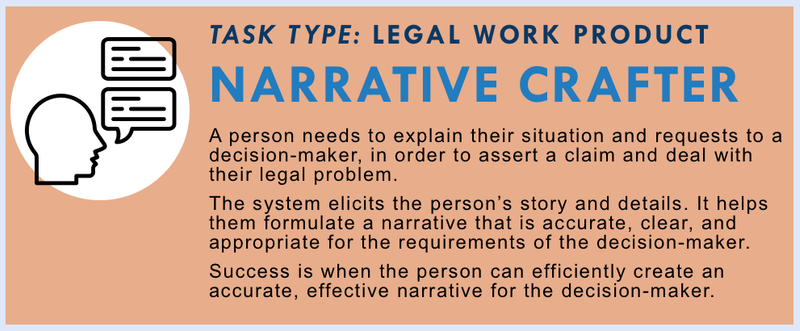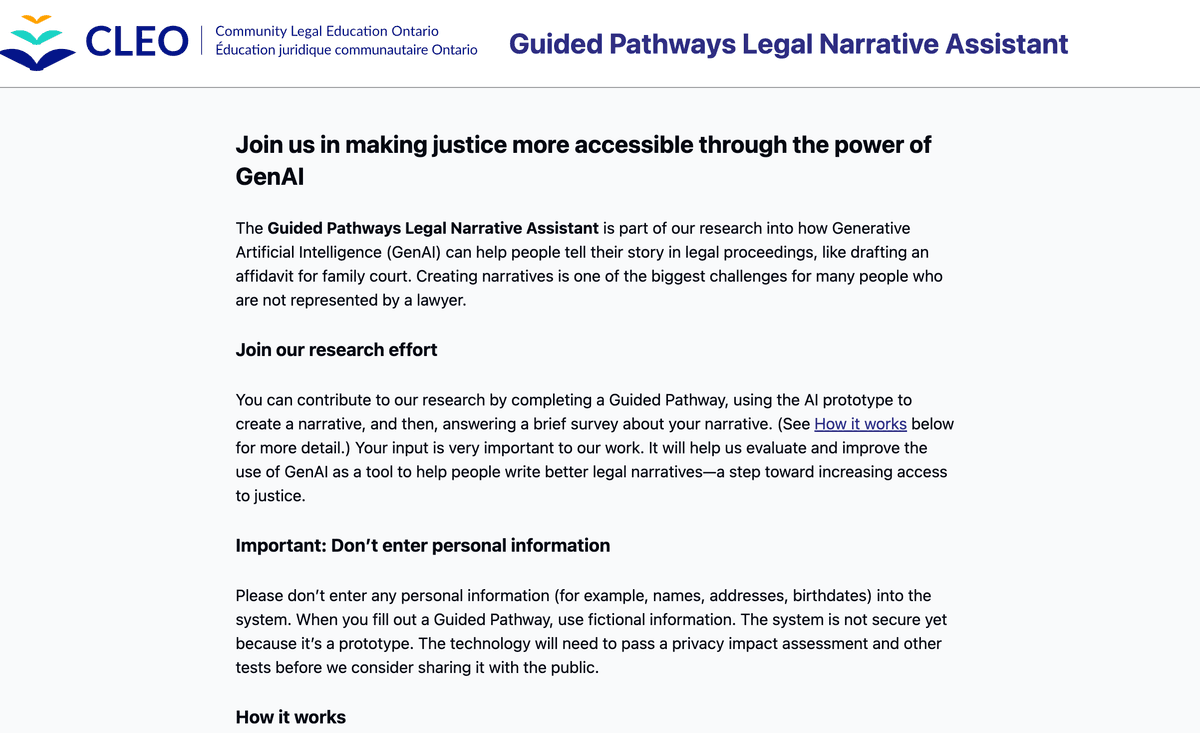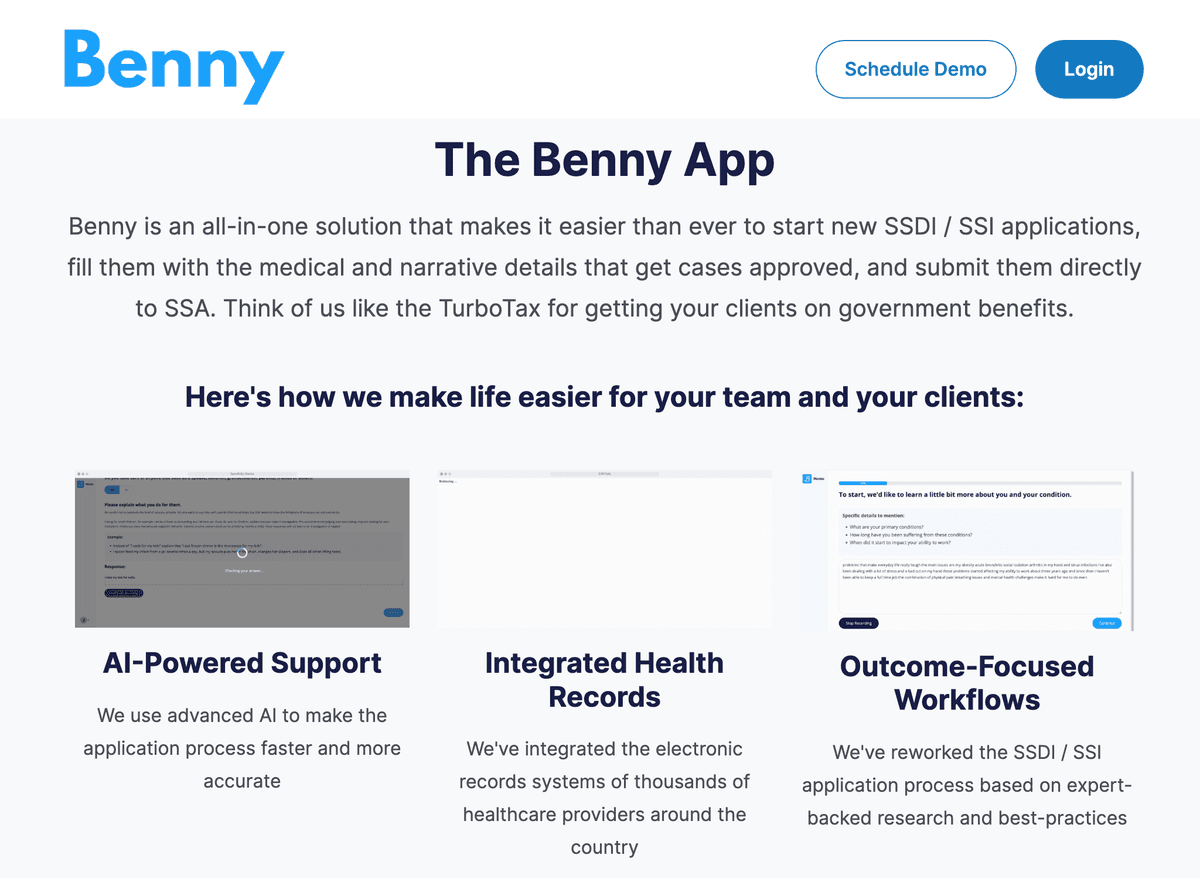Narrative Drafter

Help people tell their legal story clearly and effectively—so decision-makers can understand and act.
Task Description
Many legal processes require a person to tell their story—not just through forms and checkboxes, but in their own words. Whether it’s explaining a hardship for a fee waiver, writing a declaration to a judge, drafting a complaint, or requesting a public benefit or accommodation, people need to craft a clear, persuasive, and accurate narrative to support their claim.
This task focuses on a system that acts as a narrative coach and drafting assistant. It guides the person through a structured but conversational process to gather the facts of their situation—what happened, when, why it matters, and what they’re asking for. It then helps them shape this input into a coherent, legally relevant narrative tailored to the needs of the decision-maker (e.g., judge, landlord, agency reviewer).
The system doesn’t fabricate or embellish—it helps the person stay truthful and complete, while offering suggestions for tone, structure, and formatting. It explains what kinds of information are most important for their specific legal context, and how to connect facts to claims. The final result is a narrative the person can understand, stand behind, and submit with confidence.
This task is especially important for people representing themselves, those with limited literacy, or anyone facing emotional difficulty in describing trauma, hardship, or complex personal circumstances. It also helps overburdened providers support clients in drafting narratives without writing them from scratch.
Success means the person efficiently produces an accurate, relevant, and compelling legal narrative—structured in a way that meets the decision-maker’s expectations and supports resolution of their issue.
How to Measure Quality?
🧾 Legal Relevance
- Captures key facts aligned with legal requirements (e.g., dates, relationships, hardships)
- Aligns narrative with specific claims, requests, or defenses
- Tailors content to the type of legal issue and intended audience
✍️ Clarity and Organization
- Narrative is logically structured with a beginning, middle, and end
- Uses clear, plain language appropriate for court or administrative review
- Avoids jargon, confusion, or irrelevant details
📌 Accuracy and Truthfulness
- Maintains fidelity to the user’s real experience
- Encourages clarification and correction of vague or conflicting details
- Includes user review and sign-off before submission
🗣️ Tone and Appropriateness
- Matches the expectations of the audience (e.g., formal for court, direct for benefits agency)
- Avoids accusatory or disrespectful tone while preserving the user’s voice
- Suggests alternative phrasing if tone may hurt the claim
⏱️ Efficiency and Support
- Reduces time and emotional strain of narrative creation
- Helps users focus on key facts and reduce rambling or repetition
- Allows providers to quickly review and polish drafts
🧑⚖️ Impact and Usefulness
- Decision-makers report that narratives are easier to understand and more informative
- Narratives support case outcomes by meeting filing or evidentiary standards
- Users report greater confidence and agency in how their story is told
Related Projects

CLEO's Guided Pathways Legal Narrative Assistant
CLEO’s Guided Pathways Legal Narrative Assistant is a prototype being researched, aiming to help people tell their legal story clearly and effectively

Benny the Benefits Navigator
An AI-enabled platform that streamlines Social Security Disability Insurance (SSDI) and Supplemental Security Income (SSI) applications, to reduce completion time and improve accuracy, completeness, and approval rates.

Malawi Lawyer's Assistant
A lawyer-supported WhatsApp tool that turns survivor narratives (in local languages) into draft, legally compliant affidavits to accelerate protection-order applications.